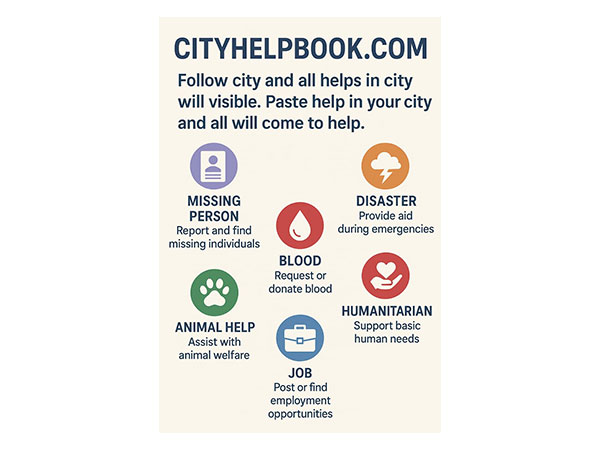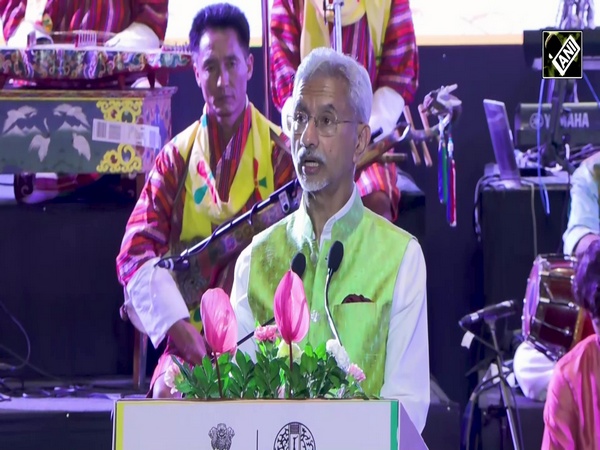Colliers identifies 17 Indian cities as emerging hot spots for growth
Jun 18, 2024

New Delhi [India], June 18 : Emerging cities will play a key role in India's march towards becoming the world's third largest economy. In its latest report "Equitable Growth and Emerging Real Estate Hotspots", Colliers says factors such as infrastructure development, digitization, tourism and changes in the office landscape will drive the next wave of urban growth.
By 2050, India is expected to have nearly 100 cities with populations exceeding one million, in addition to its eight mega-cities. In its report Colliers has identified over 100 such emerging cities to determine their real estate demand and growth potential over next 5-6 years.
The report says real estate sector in India is going through a transformation with smaller towns becoming vital to the economy, because of infrastructure, affordable houses, skilled labour and government support. The sector could reach USD 1 trillion by 2030 and potentially USD 5 trillion by 2050, contributing 14-16 per cent to India's GDP.
Colliers report projects urban growth in about 100 cities having a million population by 2050. After detailed analysis Colliers identified 30 potentially high growth cities from the universes of 100 plus cities. The report further says that 17 out of these 30 cities will emerge as real estate hot spots.
Cities like Amritsar, Ayodhya, Jaipur, Kanpur, Lucknow, and Varanasi are set to benefit from improved infrastructure and rising economic activities. These locations are strategically positioned to capitalize on enhanced connectivity and government initiatives, making them attractive destinations for real estate investments.
Patna and Puri in the eastern region are identified as potential growth centres, bolstered by infrastructure upgrades and increasing commercial activities.
Dwarka, Nagpur, Shirdi, and Surat in the western region are expected to see robust growth driven by industrial development and infrastructure expansion.
Coimbatore, Kochi, Tirupati, and Visakhapatnam in the southern region are emerging as key hubs for residential and commercial developments, supported by strong local economies and infrastructural enhancements.
Indore in central India stands out with its strategic location and growing industrial base, making it a prominent destination for real estate investments.
The National Infrastructure Pipeline (NIP) and PM GatiShakti projects are pivotal in driving equitable growth beyond Tier I cities.
Enhanced connectivity and manufacturing activities are expected to spur demand across warehousing and residential segments in these emerging hotspots.
The shift towards hybrid work models is fuelling demand for office spaces in smaller cities. Locations like Coimbatore, Indore, and Kochi are witnessing increased interest as satellite office markets due to lower rental costs and affordable housing options, attracting both companies and skilled talent.
Increased digital penetration is transforming smaller towns into hubs for data centres and smart infrastructure.
Cities such as Jaipur, Kanpur, and Lucknow are anticipated to witness significant real estate activity driven by e-commerce and data consumption, leading to the development of fulfillment centres and warehouses.
Temple towns like Amritsar, Ayodhya, Varanasi, and Tirupati are set to benefit from spiritual tourism, supported by infrastructure improvements and government policies.
These destinations are expected to attract investments in hospitality and retail sectors, catering to growing tourist footfalls.
Badal Yagnik, CEO of Colliers India, highlighted, "Smaller towns are emerging as dynamic contributors to India's economy, driven by improved infrastructure, affordable real estate, skilled talent, and government initiatives. This growth is set to propel the real estate sector to an estimated USD 1 trillion by 2030 and potentially USD 5 trillion, a 14-16 per cent share in GDP by 2050."
Vimal Nadar, Senior Director & Head of Research at Colliers India, noted, "As tech giants and innovative start-ups tap into the skilled talent pools of emerging hubs, smaller cities are on the brink of a transformative boom in both office and residential markets. Office rental arbitrage, typically 20-30 per cent lower and relatively affordable housing market in these locales creates a win-win scenario for companies and employees alike."
As India gears towards achieving a USD 1 trillion real estate sector by 2030, and potentially a 14-16 per cent share in GDP by 2050, these emerging hotspots are expected to play a pivotal role in driving economic growth and fostering sustainable urban development.
With supportive government policies and strategic investments, these cities are poised to attract both domestic and international investments, transforming them into vibrant centres of economic activity.




















